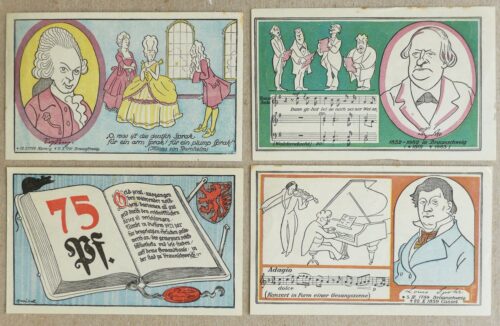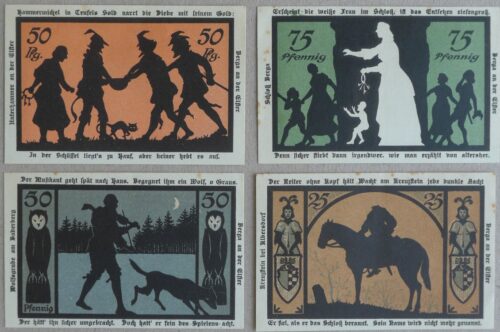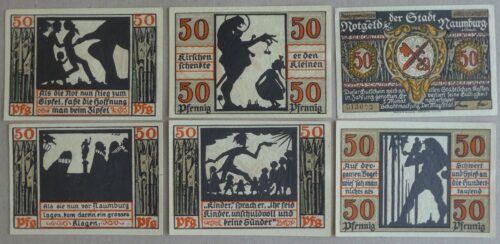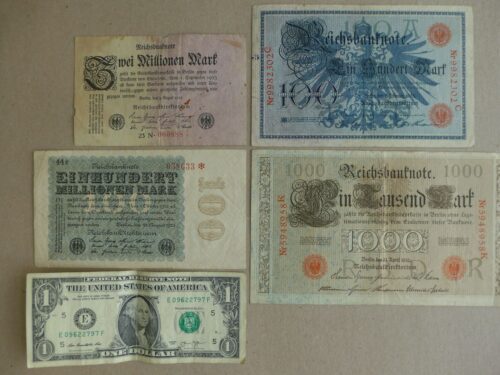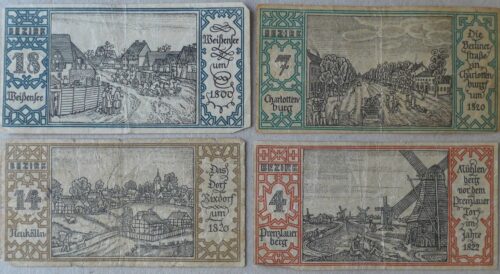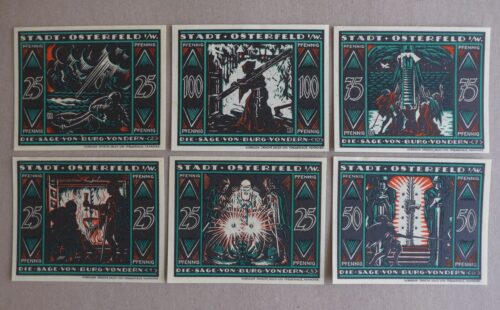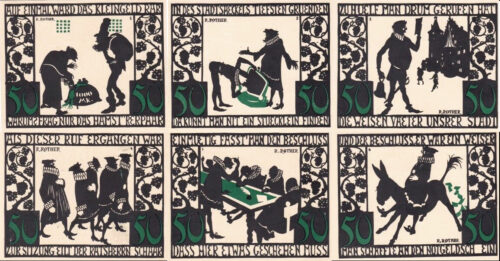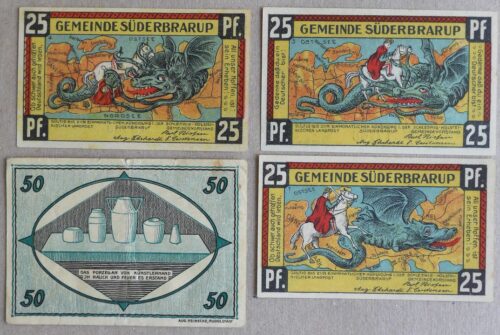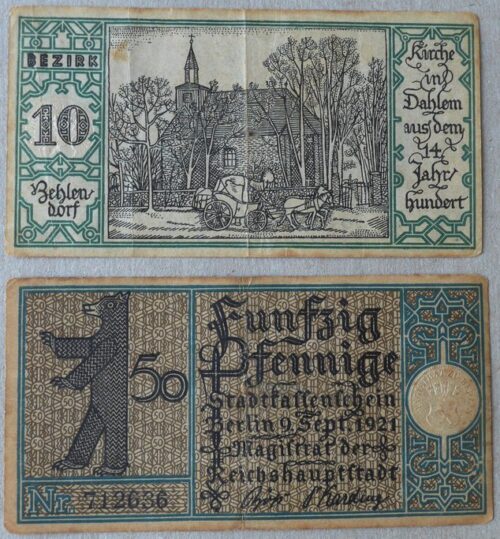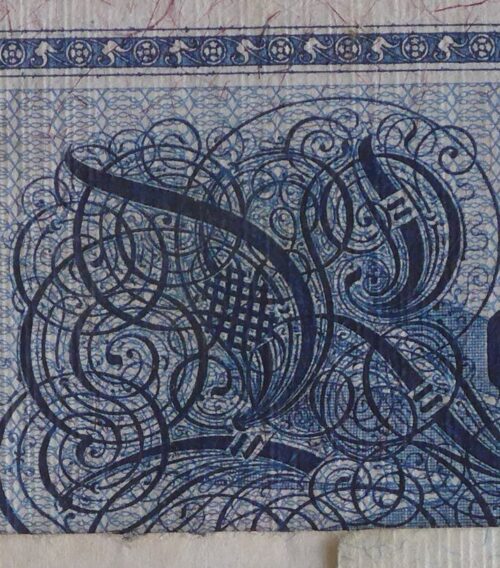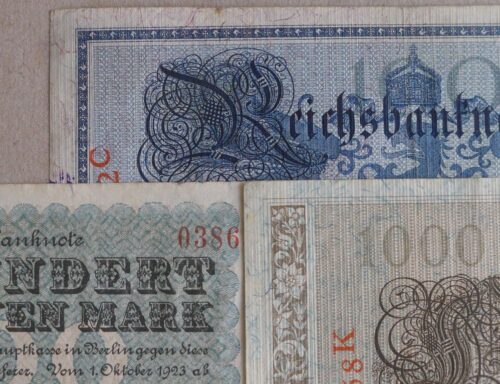Warning: contains banknote showing donkey pooping money
This is actual German currency from around 1914 to 1923 when the country issued hundreds of varieties of so-called emergency currency (Notgeld, “emergency money”) as a response to a number of different economic crises. By far the most famous of these was the hyperinflation from 1921 to 1923, when 100-trillion mark notes were issued and the exchange rate was around 4 trillion marks to one U.S. dollar. At bottom left are notes ranging from 100 to 100 million marks.
Click photos to enlarge
In the 1910s, the problem wasn’t inflation but that people were hoarding so much cash at home there wasn’t enough in circulation and it was ruining the economy. (The austerity that Germany imposed on the EU and that economists now agree caused the 2008 Euro crisis, wrecking the Greek economy, could be attributed to the same mindset).
During the crises the government allowed dozens if not hundreds of towns and states to issue their own emergency currency, in ordinary denominations, and for whatever reason they often used marvelously beautiful designs. Ironically, people ended up hoarding that too, reportedly just because it looked so nice, which it did. In economics this is known as the rebound effect, the same reason why making cars more fuel-efficient ends up with people just driving more, instead of being content to spend less on gas for the same amount they’d been driving before.
So now there was a shortage of the shortage-stopping currency, and they had to print more, but this time without validation markings so it wouldn’t be usable as currency and people would be free to collect it. The phenomenon expanded into notes that were never intended to be currency and were made purely for collecting.
Some of the currency had biting satire on the state of the economy, such as this one with a donkey pooping money. (It wasn’t the only one to feature pooping.) The images and versified story have the feel of a fairy tale and the silhouettes are extraordinarily expressive of the fine nuances of the characters.
Hard cash is scarce within our borders
Why? Try asking all the hoarders
In the city coffers’ depths
There’s hardly even one cent left
The people cried for help and prayed
“We need the city fathers’ aid!” [note town crier with bell]
The call went out; the people worried
To the town hall the leaders hurried
Unanimously they decided
Substantial help must be provided [note head-scratching and leaning wearily on elbow]
The wise solution was a snap
They came up with this fake cash crap
The crises were part of the unrest that characterized Germany during World War I and directly afterward, when Germany founded its first constitutional democratic republic, which lasted from 1918 to 1933 and later became known as the Weimar Republic (for historical reasons; the name was never official). The paradoxes of the time included representative democracy along with political extremism, and swings between economic chaos and prosperity.
The modest one depicting modern vases in green and black (photos below, top left) comes from a town known for its porcelain and bears the rhyme,
In fire and smoke the artists’ hands
Make porcelain with their commands
Silhouettes were common motifs, having been an immensely popular medium for hundreds of years. They had long since expanded beyond the silhouette portraits cut out by hand from black paper, with countless broadsheets and books printed with artistic, fictional, or nonfiction themes , often in formats somewhat similar to our newspaper comics, some for children and some for adults.
The emergency currency in the hoarding years in the 1910s was in standard denominations, in contrast to the hyperinflation of the early 20s where bills ranged into the trillions of marks.
